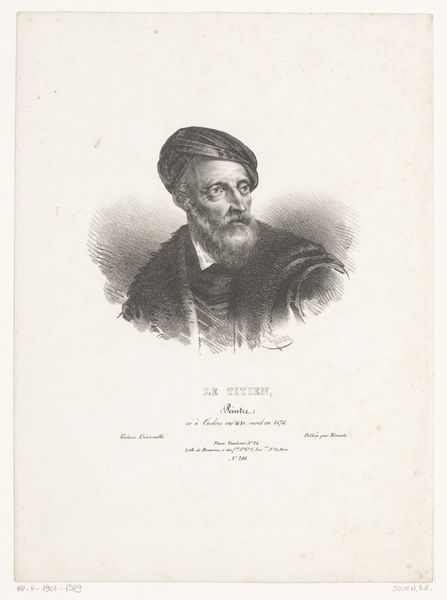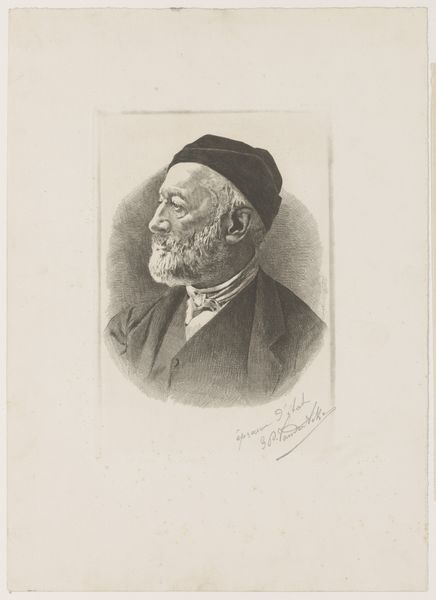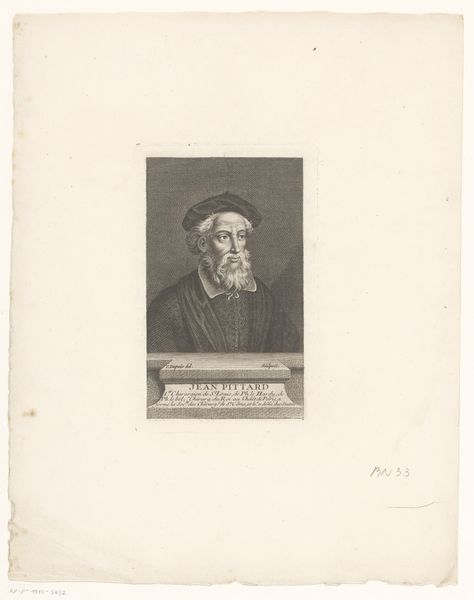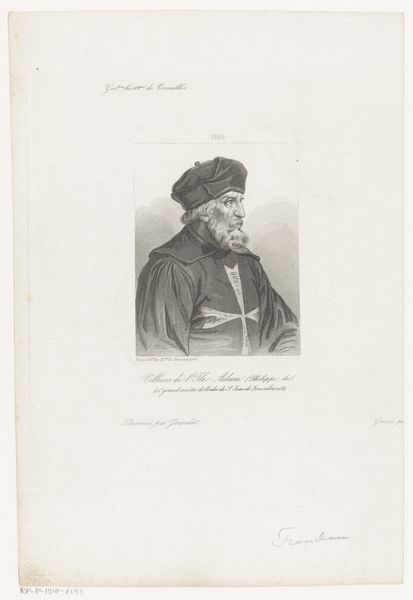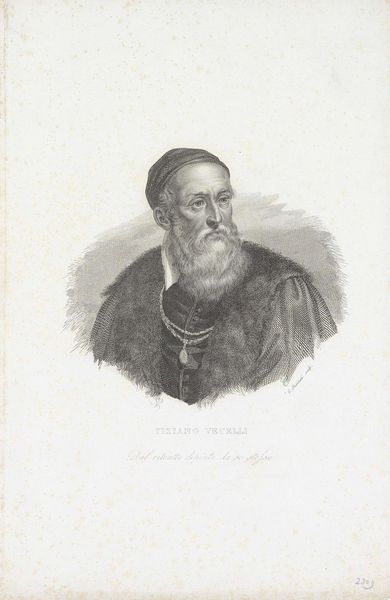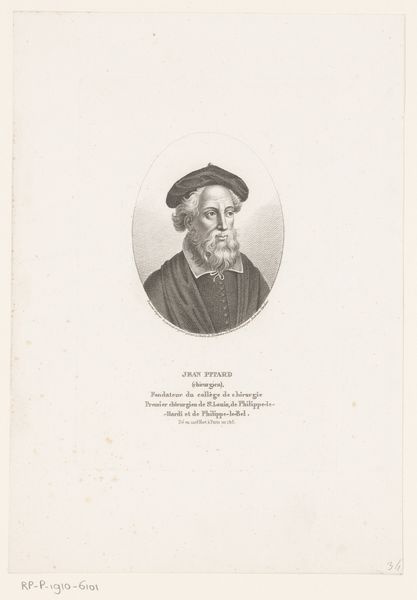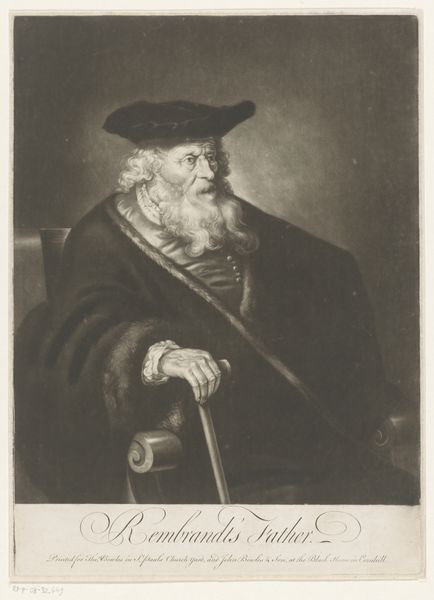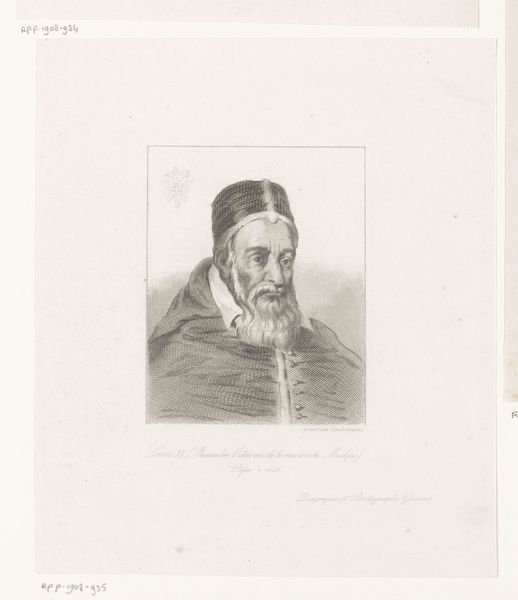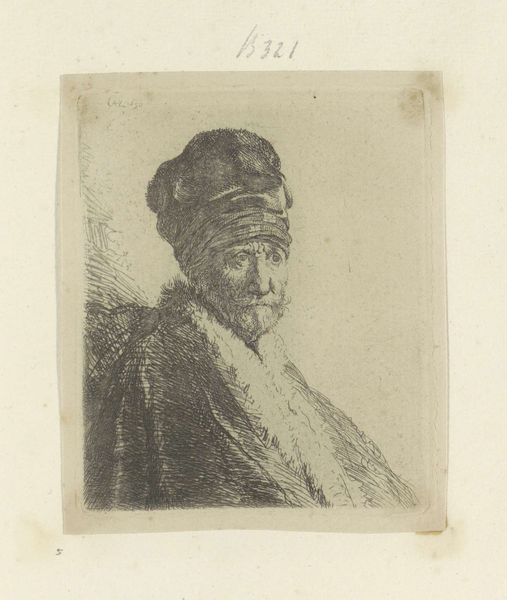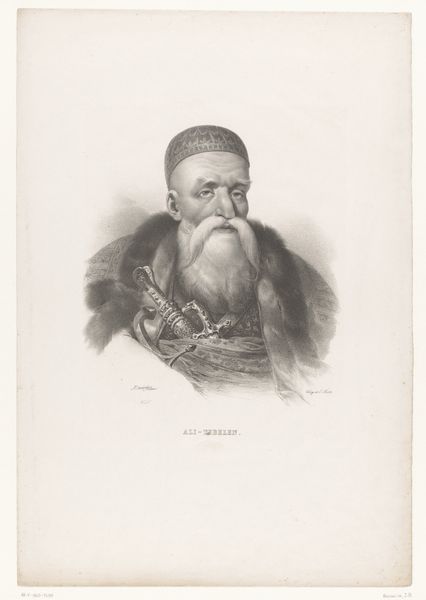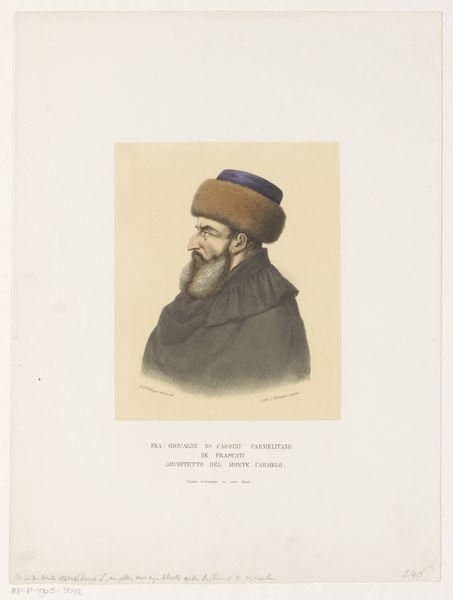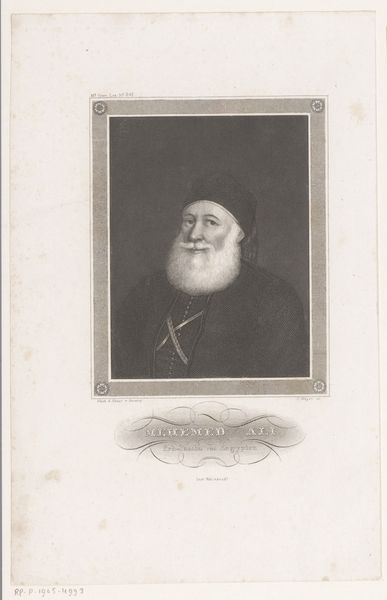
print, engraving
#
portrait
#
pencil drawn
# print
#
pencil drawing
#
history-painting
#
engraving
#
realism
Dimensions: height 496 mm, width 337 mm
Copyright: Rijks Museum: Open Domain
Curator: Nicolas Maurin created this print, titled "Portret van Titiaan," sometime between 1826 and 1852. It's an engraving. What's your initial read? Editor: A somberness washes over me immediately. The chiaroscuro effect throws the subject’s face into sharp relief, making his gaze seem intensely penetrating, as if he knows more than he lets on. Curator: The source image, a presumed self-portrait by Titian, has always been a vehicle for artists to prove their artistry. To Maurin's French contemporaries, to reproduce such an iconic image was to demonstrate his skill, and stake a claim on his own artistic legacy. Editor: I'm drawn to the symbolic weight of the beard; it suggests wisdom, age, and authority—common tropes for depicting venerable figures, connecting Titian to a long lineage of celebrated men. Notice, also, how the soft cap, paired with the opulent fur-trimmed robe, hints at status but maintains an accessible air. Not royalty, but something…more accessible, cultivated. Curator: In Maurin's time, Titian was lionized as the quintessential artist, embodying a supposed purity and creative genius outside the machinations of the academies. Creating copies became almost a radical act, rejecting the establishment. Editor: So, even a copy becomes a symbol of rebellion and independent artistry. Looking closer, the pendant hanging from the chain—do you think that carries a particular meaning related to Titian’s own iconography, or a statement from Maurin? Curator: Hard to say definitively. It may refer to status, belonging to a specific aristocratic circle, or the pendant can signal his intellectual leanings. Ultimately, it represents the institutional endorsement, ironically. Editor: Fascinating. An image layered with meanings, old and new, that speaks not just of Titian's artistry, but of Maurin's ambitions as well. Curator: Absolutely. This portrait reflects the complex relationship between artistic originality, historical reverence, and the socio-political context of its time.
Comments
No comments
Be the first to comment and join the conversation on the ultimate creative platform.
